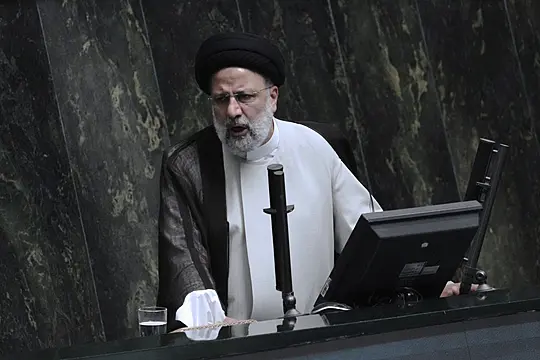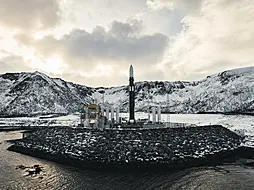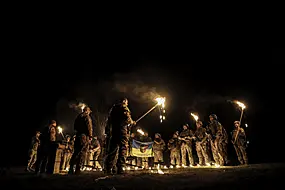Iranian President Ebrahim Raisi has appealed for national unity and tried to allay anger against the country’s rulers, even as anti-government protests that have engulfed the country for weeks continue to spread to universities and high schools.
Mr Raisi acknowledged that the Islamic Republic has “weaknesses and shortcomings”, but repeated the official line that the unrest sparked last month by the death of a young woman in the custody of the country’s morality police was nothing short of a plot by Iran’s enemies.
“Today the country’s determination is aimed at co-operation to reduce people’s problems,” he told parliament. “Unity and national integrity are necessities that render our enemy hopeless.”

His claims echoed those of Iran’s supreme leader, Ayatollah Ali Khamenei, who blamed the United States and Israel, the country’s adversaries, for inciting the unrest in his first remarks on the nationwide protests on Monday.
It is a familiar tactic for Iran’s leaders, who have remained mistrustful of Western influence since the 1979 Islamic Revolution and commonly blame domestic problems on foreign enemies without offering evidence.
The protests, which emerged in response to the death of 22-year-old Mahsa Amini after her arrest for allegedly violating the Islamic Republic’s strict dress code, have embroiled dozens of cities across the country and evolved into the most widespread challenge to Iran’s leadership in years.
A series of mounting crises have festered and helped fuel public rage, including the country’s political repression, ailing economy and global isolation.

Iran’s security forces have sought to disperse demonstrations with tear gas, metal pellets, and in some cases live fire, rights groups say.
Iran’s state TV reported that violent confrontations between protesters and the police have killed at least 41 people, but human rights groups said the number is much higher.
As the new academic year officially began this week, the demonstrations spread quickly to university campuses, long considered sanctuaries in times of turmoil.
Videos on social media showed students expressing solidarity with peers who had been arrested and calling for the end of the Islamic Republic. Concerned at the unrest, many universities moved classes online this week.
The prestigious Sharif University of Technology in Tehran became a battlefield on Sunday as security forces surrounded the campus from all sides and fired tear gas at protesters who were holed up inside a parking lot, preventing them from leaving. The student union reported that police arrested hundreds of students, although many were later released.

In one video on Monday, students marched and chanted “Jailed students must be freed!” at Tarbiat Modares University in Tehran. In another, students streamed through Khayyam University in the conservative city of Mashhad, shouting “Sharif University has become a jail! Evin Prison has become a university!” – referring to Iran’s notorious prison in Tehran.
Protests also appeared to grip gender-segregated high schools across Iran on Monday, where groups of young girls waved their state-mandated hijabs and chanted “Woman! Life! Freedom!” in the city of Karaj west of the capital and in the Kurdish city of Sanandaj, according to widely shared footage.
The response by Iran’s security forces has sparked widespread global condemnation. On Monday, President Joe Biden said his administration was “gravely concerned about reports of the intensifying violent crackdown on peaceful protesters in Iran, including students and women.”
Furious over Iran’s response to the demonstrations, the British Foreign Office summoned the Iranian ambassador in London.
UK Foreign Secretary James Cleverly said: “The violence levelled at protests in Iran by the security forces is truly shocking.”







